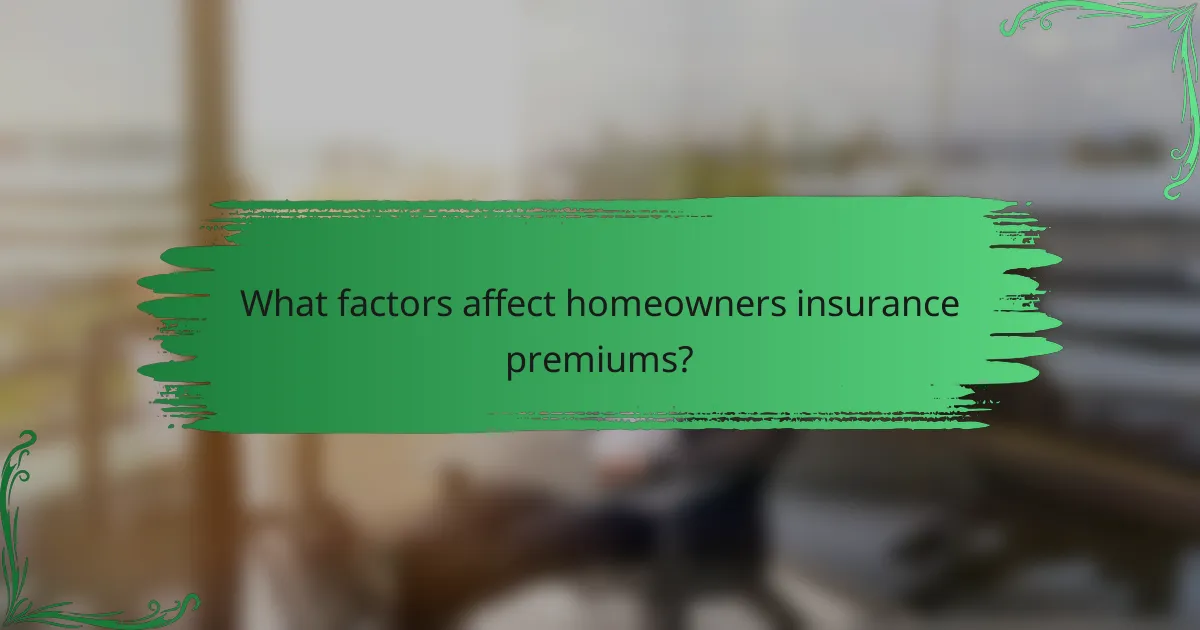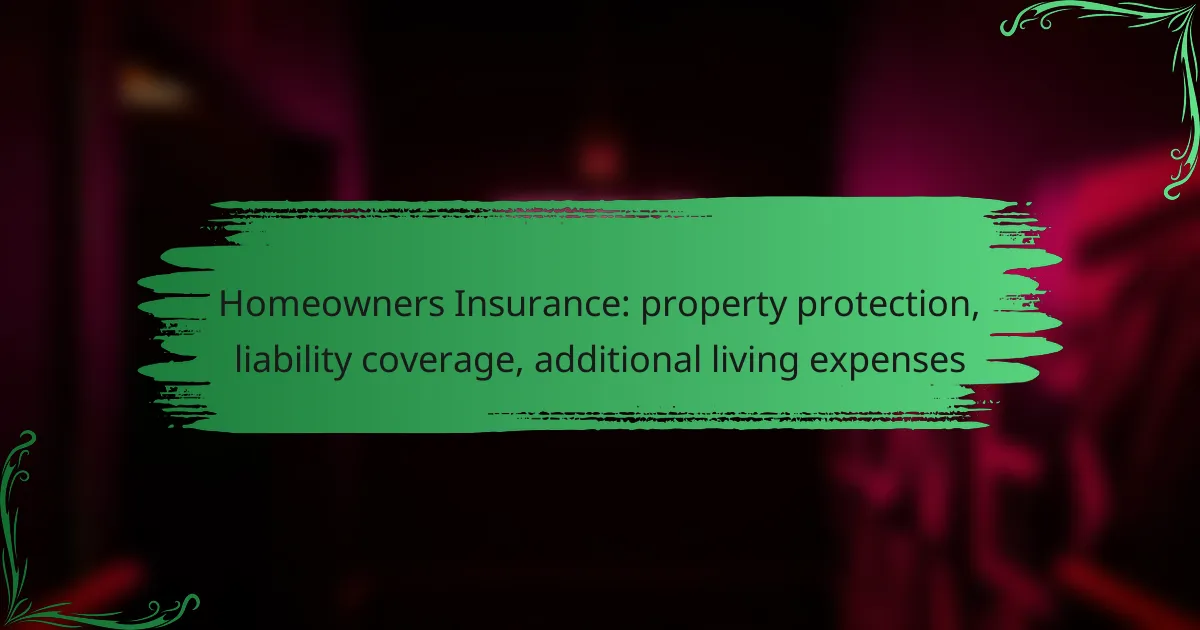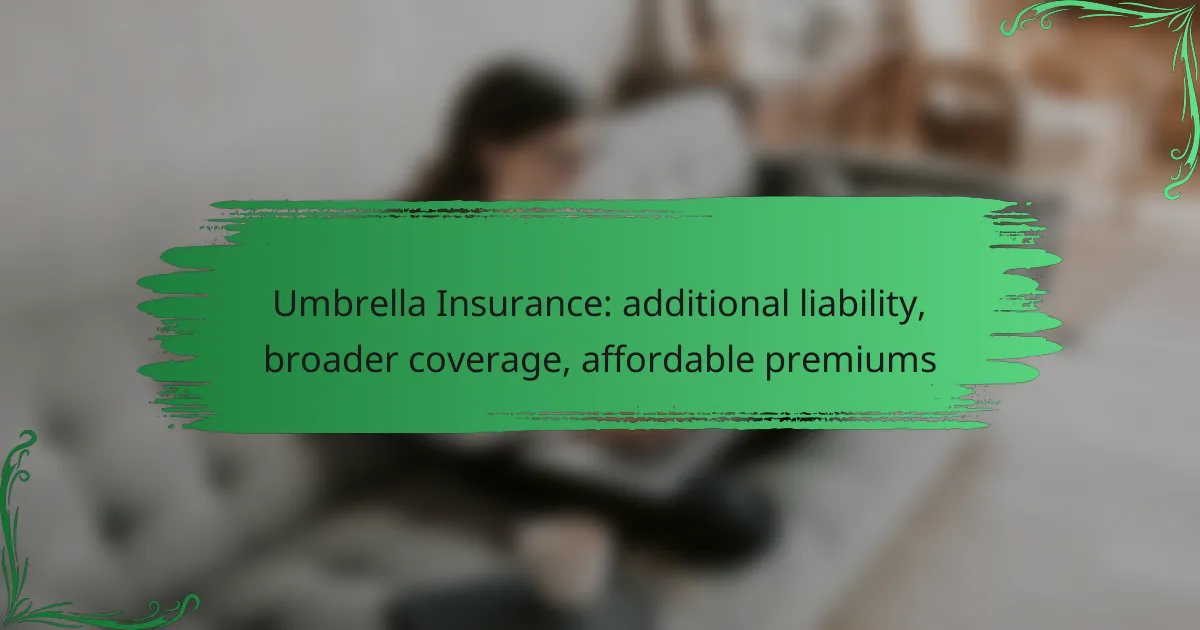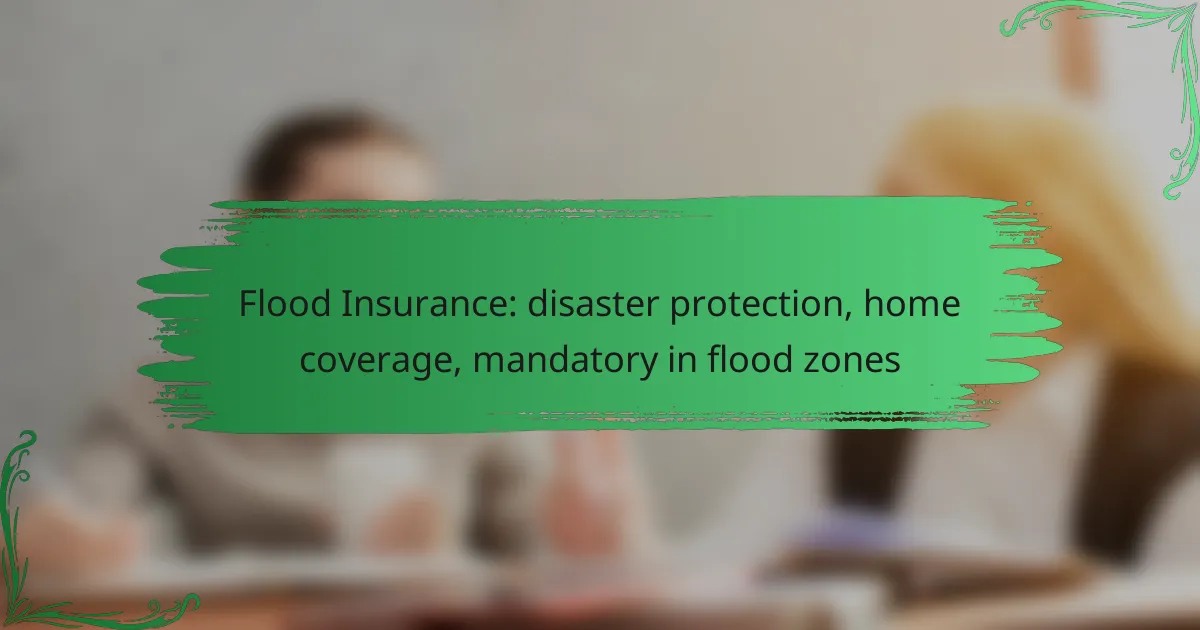Homeowners insurance is essential for safeguarding your property against damages and providing liability coverage for unforeseen incidents. It not only protects the physical structure of your home and personal belongings but also offers financial support for legal fees and medical expenses if someone is injured on your property. With various options available, homeowners can find policies that cater to their specific needs, ensuring peace of mind in times of crisis.

What are the best homeowners insurance options in the UK?
The best homeowners insurance options in the UK provide comprehensive coverage for property protection, liability, and additional living expenses. Key players in the market include Direct Line, Aviva, and Admiral, each offering unique features and benefits tailored to different homeowner needs.
Direct Line homeowners insurance
Direct Line homeowners insurance is known for its flexible policies and competitive pricing. They offer coverage for buildings and contents, as well as optional add-ons like accidental damage and home emergency cover.
One of the standout features is their online quote system, which allows homeowners to customize their coverage easily. Customers often appreciate the straightforward claims process and 24/7 customer service support.
Aviva home insurance
Aviva home insurance provides robust coverage options, including buildings and contents insurance, with the possibility of including personal possessions and legal expenses. They are recognized for their comprehensive policies that can be tailored to suit individual requirements.
Aviva also offers a no-claims discount, which can significantly reduce premiums over time. Their online tools help customers assess their coverage needs and receive tailored quotes quickly.
Admiral home insurance
Admiral home insurance is popular for its multi-policy discounts, especially when bundled with car insurance. They offer a range of coverage options, including buildings and contents insurance, with the ability to add features such as home emergency cover and personal possessions insurance.
Admiral’s user-friendly online platform allows for easy policy management and claims submission. Many customers find their customer service responsive and helpful, making the claims process smoother.

How does homeowners insurance protect property?
Homeowners insurance protects property by covering damages to the physical structure of your home and personal belongings, as well as providing liability coverage. This insurance helps homeowners recover financially from unexpected events like natural disasters, theft, or accidents that occur on their property.
Covers structural damage
Homeowners insurance typically covers structural damage caused by events such as fire, storms, or vandalism. This means that if your home is damaged, the policy will help pay for repairs or rebuilding costs, often up to the policy limit.
When selecting a policy, consider the replacement cost versus actual cash value. Replacement cost covers the expense to rebuild your home at current prices, while actual cash value factors in depreciation. Ensure your coverage aligns with your home’s value to avoid underinsurance.
Protects personal belongings
In addition to structural coverage, homeowners insurance protects personal belongings like furniture, electronics, and clothing against theft or damage. Most policies cover personal property at a percentage of the dwelling coverage, often around 50-70%.
It’s important to inventory your belongings and understand any exclusions or limits on high-value items, such as jewelry or art. You may need additional coverage or a rider for these items to ensure full protection. Regularly updating your inventory can help streamline claims if needed.

What liability coverage is included in homeowners insurance?
Homeowners insurance typically includes liability coverage to protect you from financial loss if someone is injured on your property or if you cause damage to someone else’s property. This coverage helps pay for legal fees, medical expenses, and damages awarded in lawsuits, making it a crucial component of your policy.
Personal liability coverage
Personal liability coverage is designed to protect homeowners from claims resulting from injuries or damages that occur on their property. If a visitor slips and falls or if your pet bites someone, this coverage can help pay for medical bills and legal costs. Most policies offer coverage limits ranging from $100,000 to $300,000, but higher limits are available for those who want extra protection.
When selecting personal liability coverage, consider your assets and potential risks. If you have significant savings or valuable property, opting for higher coverage limits can safeguard your finances against lawsuits. Additionally, check if your policy includes coverage for incidents that occur off your property, as this can extend your protection further.
Medical payments coverage
Medical payments coverage provides immediate assistance for medical expenses incurred by guests injured on your property, regardless of fault. This coverage typically ranges from $1,000 to $5,000 and can help cover costs like hospital visits, surgeries, or rehabilitation without the need for a liability claim.
It’s important to note that medical payments coverage does not extend to injuries sustained by you or your family members. This coverage is particularly useful for minor accidents, as it can prevent disputes and legal actions by addressing medical costs promptly. Review your policy to ensure you have adequate limits to cover potential injuries that may occur on your premises.

What are additional living expenses in homeowners insurance?
Additional living expenses (ALE) in homeowners insurance refer to the costs incurred when a home becomes uninhabitable due to a covered event, such as a fire or severe storm. This coverage helps homeowners pay for temporary housing, food, and other necessary expenses while their home is being repaired or rebuilt.
Temporary housing costs
Temporary housing costs cover the expenses of living elsewhere while your home is unlivable. This can include hotel bills, rental homes, or even staying with friends or family. It’s essential to keep all receipts and document your stay, as insurance companies typically require proof of these expenses for reimbursement.
Most policies will cover the cost of temporary housing up to a certain limit, often based on a percentage of your dwelling coverage. For example, if your home is insured for $300,000, your ALE might cover temporary housing costs up to $30,000 or more, depending on your policy’s terms.
Food and storage expenses
Food expenses may increase when living away from home, especially if you are unable to cook. Homeowners insurance typically covers the difference between your normal food costs and what you spend on meals while displaced. Keep track of your regular grocery expenses to help substantiate your claims.
Storage expenses can arise if you need to move your belongings out of your home during repairs. Insurance may cover the costs of renting a storage unit or moving your items to a safe location. Always check your policy for specific limits and conditions regarding food and storage coverage to ensure you are adequately protected.

How to choose the right homeowners insurance?
Choosing the right homeowners insurance involves evaluating your property’s value, understanding policy features, and ensuring adequate coverage for potential risks. A well-selected policy protects your home and personal belongings while offering liability coverage and support for additional living expenses if needed.
Assess property value
Start by determining the current market value of your home, which includes the structure and any attached features. Consider factors such as location, size, age, and condition of the property. You may want to consult a real estate agent or use online valuation tools for a more accurate estimate.
Additionally, evaluate the value of your personal belongings, including furniture, electronics, and valuables. A common rule is to document and appraise items worth over a few hundred dollars to ensure they are adequately covered under your policy.
Compare policy features
When comparing homeowners insurance policies, focus on key features such as coverage limits, deductibles, and included protections. Look for policies that offer comprehensive coverage for property damage, personal liability, and additional living expenses in case you need to temporarily relocate.
Pay attention to exclusions and limitations in each policy. For instance, some policies may not cover specific natural disasters or may have caps on certain types of claims. Create a checklist of essential features and compare multiple quotes to find the best fit for your needs.

What factors affect homeowners insurance premiums?
Homeowners insurance premiums are influenced by various factors, including the property’s location, security features, and the overall risk associated with the home. Understanding these elements can help homeowners make informed decisions to potentially lower their insurance costs.
Location risk factors
The location of a home significantly impacts homeowners insurance premiums. Areas prone to natural disasters, such as floods, earthquakes, or hurricanes, typically see higher rates due to increased risk. Additionally, neighborhoods with higher crime rates can lead to elevated premiums as insurers account for potential theft or vandalism.
Homeowners should research their area’s risk profile before purchasing insurance. For example, homes in flood zones may require additional flood insurance, which can increase overall costs. It’s advisable to consult local insurance agents who can provide insights specific to the region.
Home security features
Implementing security features can positively influence homeowners insurance premiums. Homes equipped with security systems, smoke detectors, and deadbolt locks often qualify for discounts, as these measures reduce the risk of theft and fire damage. Insurers may offer savings of around 5-20% for such enhancements.
Homeowners should consider investing in modern security technology, such as smart home devices that monitor for intrusions or fires. Regularly updating these systems not only enhances safety but can also lead to further reductions in insurance costs. Always inform your insurer about any upgrades to ensure you receive applicable discounts.



